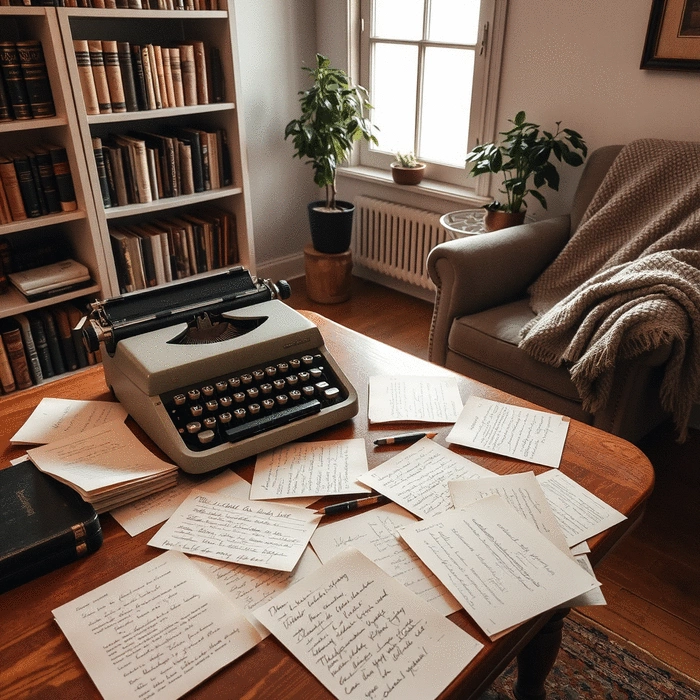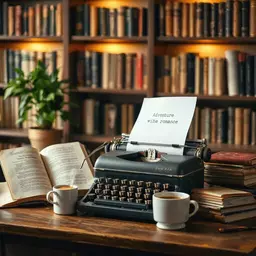Use Triggers
Identify moments in the present that evoke memories from the past.
Subscribe for essential tips and resources to elevate your storytelling journey.
Posted on: 2025-09-10
By: Livia Galloway
As a writer, have you ever pondered how a character's past shapes their present? Understanding the intricacies of flashbacks can turn your narrative from mundane to extraordinary, capturing the hearts and minds of your readers. Let's delve into the essential lessons on this powerful storytelling technique.
Understanding the impactful techniques of flashbacks can enhance your narrative and deepen emotional connections. For more insights on various narrative approaches, consider exploring types of storytelling techniques.
Identify moments in the present that evoke memories from the past.
Incorporate sights, sounds, and smells to make flashbacks feel real.
Ensure every flashback serves a purpose in advancing the plot.
Use formatting techniques to indicate shifts between timelines.
Flashbacks are like magical windows into a character's past, offering readers glimpses that enrich the story. They provide context, enhance emotional depth, and can be pivotal in developing plotlines. At Fiction Flourish, I believe that understanding how to use flashbacks effectively can elevate your storytelling game immensely!
When we talk about flashbacks, we're discussing a vital storytelling technique that transports readers back in time. This technique allows characters to reflect on past experiences, shaping their present decisions and actions. The beauty of flashbacks lies in their ability to weave together different time periods in a seamless narrative flow.
So, what exactly is a flashback? Simply put, it's a narrative device that interrupts the current timeline to showcase events from the past. Imagine a character reminiscing about their childhood while preparing for a big moment—this is where flashbacks shine! They help us understand motivations and backstories that drive characters toward their goals.
Flashbacks are not just a distraction; they serve a purpose in storytelling. They invite readers to connect emotionally with characters and their journeys. By incorporating relevant backstory through flashbacks, you can develop a richer narrative that resonates with your audience. For more on character development, explore how to craft complex characters.
Flashbacks play a crucial role in the narrative structure by breaking the linear flow of the plot. They allow for dynamic storytelling that keeps readers engaged and curious about how past events influence the present. When done right, flashbacks can create suspense and intrigue, slowly unveiling mysteries that captivate your audience.
As a writer, utilizing flashbacks can deepen the themes and motifs in your story. They can illustrate how past traumas or experiences shape a character's current circumstances, making their journey more relatable. Remember, the key is to integrate flashbacks smoothly to maintain your story's momentum!
To make your flashbacks even more impactful, consider using emotional triggers. These can be objects, phrases, or settings that evoke strong feelings in your characters and, consequently, your readers. By weaving these triggers into your narrative, you can create a more immersive experience that draws readers deeper into the emotional landscape of your story.
As we wrap up our exploration of flashbacks, it's crucial to remember that these narrative devices can turn a good story into a great one! Flashbacks enrich your storytelling by unveiling characters' backstories and enhancing the emotional depth of your narrative. Whether you're just starting out or looking to refine your craft, understanding the role and execution of flashbacks can significantly elevate your writing.
Here are some essential techniques to keep in mind when crafting flashbacks:
Flashbacks should feel like seamless extensions of your narrative, not jarring interruptions. One of the simplest ways to achieve this is by maintaining a connection to the present storyline. Consider how your character’s past directly influences their actions or emotions in the present. It’s all about making those connections clear for the reader! For tips on making your characters more authentic, check out how to craft engaging character backstories.
Here are some effective techniques for writing engaging flashbacks:
Flashbacks carry emotional weight, not just for characters but also for readers. By revealing pivotal moments in your character’s past, you create a more profound connection. Readers will empathize with their struggles and triumphs, which can heighten the overall impact of your story.
When integrating backstory, remember these points:
At Fiction Flourish, I believe in the power of community and shared experiences! Engaging with fellow writers can spark new ideas and help us all grow as storytellers. I invite you to share your techniques for using flashbacks in your writing. What strategies have worked for you?
Feedback is a two-way street! Not only can you share your methods, but you can also reflect on how you’ve seen flashbacks utilized in your favorite books. Let’s learn from each other’s experiences!
Don’t be shy! I’d love to hear about your experiments with flashbacks. You can share your thoughts in the comments, and we can discuss what has or hasn’t worked for you. Remember, every writer’s journey is unique, and your insights could inspire someone else!
When you engage with others, you not only enhance your understanding of flashbacks but also build a supportive network of writers. Who knows? Your shared experiences might even spark a new writing workshop idea at Fiction Flourish!
Feedback is golden when it comes to honing your craft! Don’t hesitate to seek out opinions on your flashback scenes from trusted peers or writing groups. Constructive criticism can help you identify areas for improvement and enhance your storytelling techniques. For further guidance on refining your literary skills, consider these effective storytelling tips for beginners.
Here are some creative writing tips for effective flashback implementation:
Ultimately, writing is a journey, and I'm here to help you navigate it. Let’s keep the conversation going and support each other in our creative endeavors!
Here is a quick recap of the important points discussed in the article:

 What if the key to captivating storytelling lies in how vividly you can visualize your characters? B
What if the key to captivating storytelling lies in how vividly you can visualize your characters? B
 Did you know that a well-defined theme can significantly enhance a reader's emotional investment in
Did you know that a well-defined theme can significantly enhance a reader's emotional investment in
 "Pacing is like the heartbeat of a story; it determines how we experience its highs and lows." This
"Pacing is like the heartbeat of a story; it determines how we experience its highs and lows." This